PGM Antique Dress Form, PGM Antique Mannequin, PGM Color Dress Form Mannequin, art designed by durable USA dye color (not by paint), the color is non-fading, custom made in USA. All antique designed or colored dress form mannequin are pin-able. This Custom made lead time 7-10 working days. and will be shipped worldwide in 2015.
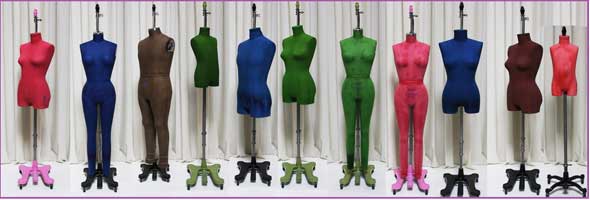
PGM Crazy Color Dress Form Mannequin 2015
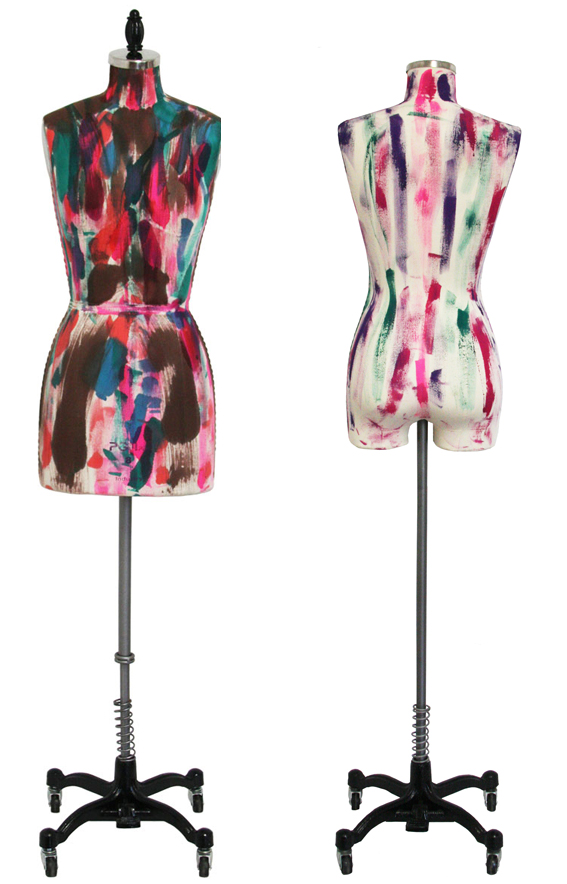
THE HISTORY OF THE MANNEQUIN
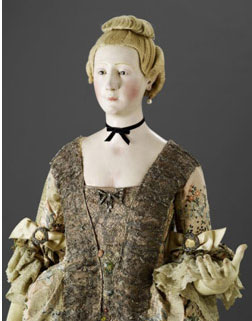
Only recorded surviving life-size 18th-Century French mannequin de mode
A Timeline of Mannequin Usage
Early 1800s: Mannequins were used mostly for court tailors and dressmakers to avoid embarrassment.
Mid 1800s: The sewing machine gains popularity. The first stores to use mannequins in displays were sewing stores.
Industrial Revolution: The industrial revolution created a new middle class with money to spend on items that were previously only available to royalty and landed gentry. Things like clothing! Fashion became accessible to the newly formed middle class. More retail stores opened and the owners used mannequins to display the latest clothing trends. These mannequins were nothing like mannequins today. They were made from wax, wood, or heavy cloth with iron feet. They were extremely heavy and cumbersome. To give them shape papier-mâché and sawdust were used. This was the birth of a new industry called, “window trimming”, or to us now as “visual merchandising”.
1880s: Stores begin installing window panes in the front and street lights become more common.
Early 1900s: Starting in the United Kingdom, department stores become more widespread. Department stores begin to set up more elaborate window displays with mannequins that became more detailed by using glass eyes, real hair, and facial expressions.
World War One: European men were sent off to war and women were left to perform mens’ duties. This caused a shift in women’s fashion; women no longer wore crinolines and bustiers, but more streamlined attire. As women became more practical and realistic, the mannequin industry followed suite. In the 1930s Lester Gaba created the first modern realistic looking mannequins. He took his knowledge of soap sculpting and made figures from plaster. They became a pop culture hit known as the “Gaba Girls”. Each mannequin had a name and Lester was famous for taking them to popular venues.
World War Two: The depression left store windows looking more somber and likewise the mannequins seemed to take on a sad tone. Luckily, it did not last long, and by the 1950s mannequins are once again seen with smiles. Male mannequins took on a more relaxed nature. Some were even given holes between their lips to hold a pipe!
1960s: Fibre glass and plastic become options for mannequin production and this opens doors into a whole new world of creativity with mannequins.
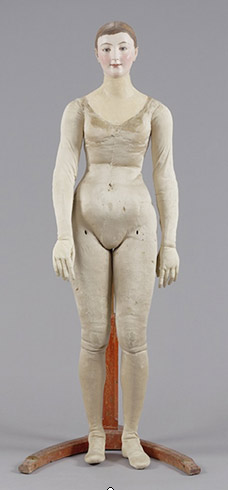
In the late 18th century and early 19th century, Paul Huot’s mannequins were the most sought-after among artists from Paris to St. Petersburg. The genre painter August von der Embde paid 1000 francs — an enormous sum — to have one sent to Kassel, Germany, while the British painter William Etty once waited a full year to obtain one. These “mannequin perfectionné,” as they were known, had an internal skeleton with moveable joints, horsehair stuffing, and an external cotton stockinette covering that mimicked human skin. (Image courtesy of Museumslandschaft Hessen Kassel, Sammlung Angewandte Kunst © bpk – Bildagentur für Kunst, Kultur und Geschichte / Museumslandschaft Hessen Kassel)
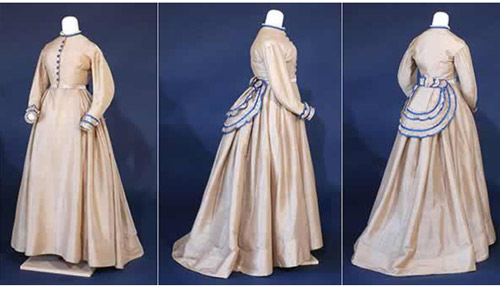
In fact, no one actually knows who created the first full figure mannequin. It is thought that the creation of a clothing form dates back thousands of years. Later, an item called a ‘fashion doll' began circulating around France. These dolls ranged from 12 inches to life size and where always stylishly dressed. The dolls were exchanged among the royals and merchant class.
The word mannequin came from the Dutch word "maneken" which means little men. There are two accepted spelling for mannequin - "mannequin" and "manikin" which is nearer the original Dutch word. The meaning of the term today is either ‘a model of human figure for display of garments, hats or furs or a dressmaker's assistant who wears new costumes to display them for sale in dressmaking houses.'
A mannequin (also called a manikin, dummy, lay figure or dress form) is an often articulated doll used by artists, tailors, dressmakers, window dressers and others especially to display or fit clothing. The term is also used for life-sized dolls with simulated airways used in the teaching of first aid, CPR, and advanced airway management skills such as tracheal intubation and for human figures used in computer simulation to model the behavior of the human body. During the 1950s, mannequins were used in nuclear tests to help show the effects of nuclear weapons on humans.
Use by dressmakers or Tailors
Shop mannequins are derived from dress forms used by fashion houses for dress making. The use of mannequins originated in the 15th century, when miniature "milliners' mannequins" were used to demonstrate fashions for customers. Full-scale, wickerwork mannequins came into use in the mid-18th century. Wirework mannequins were manufactured in Paris from 1835
Use by store display
Mannequins are used primarily by retail stores as in-store displays or window decoration. However, many online sellers also use them to display their products for their product photos (as opposed to using a live model).
Use by artists
Historically, artists have often used articulated mannequins as an aid in drawing draped figures. The advantage of this is that clothing or drapery arranged on a mannequin may be kept immobile for far longer than would be possible by using a living model.
Use by Medical education
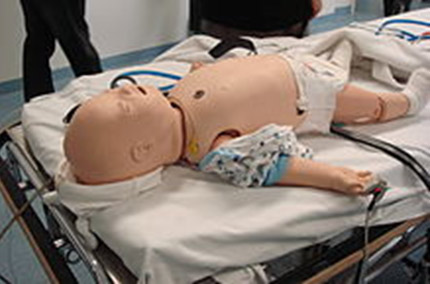
In first aid courses manikins may be used to demonstrate methods of giving first aid (e.g., resuscitation). Fire and coastguard services use mannequins to practice life-saving procedures. The mannequins have similar weight distribution to a human. Special obese mannequins and horse mannequins have also been made for similar purposes
Use by Military
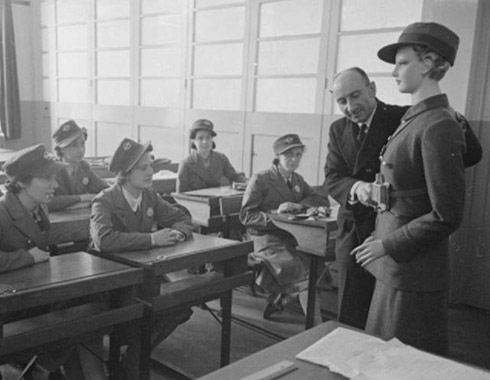
Mannequins have even enjoyed stints in the military. Nuclear test dummies, decoys in the trenches and life-sized peace offerings are only some of their assigned posts.
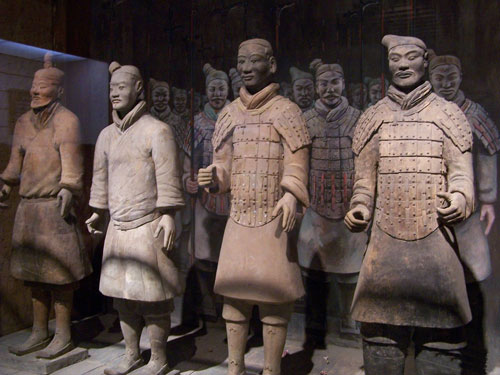
Military use of mannequins is recorded amongst the ancient Chinese. Chinese Terra-Cotta Warriors (Army), start from B.C. 246, maybe the first mannequin in the world. |



